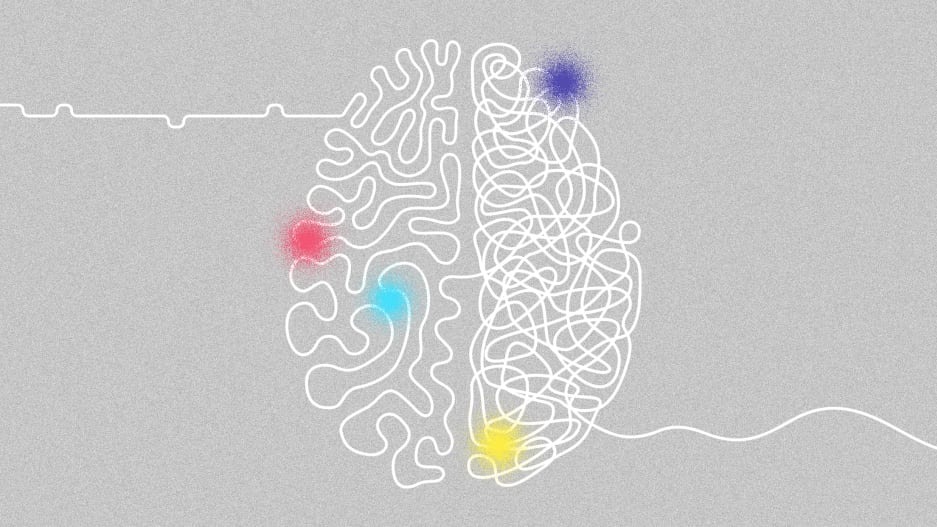- | 6:36 pm
How to train your brain to deal with distractions, learn to concentrate, and refind your motivation
This is what’s really behind our inability to focus and how to change it.

For years, we complained that we couldn’t focus in open offices. Then when we started working remotely, we found it just as difficult in our home offices. Is the problem external distractions, or are our own brains holding us back from that coveted “flow state” where big ideas happen?
There’s been a shift in the past few years. People aren’t focused as much on just getting the most things done. It’s more about finding connection and purpose, as well as finding a way to focus amid interruptions and constantly stressful conditions. In short, it’s not just you; it’s gotten more difficult to stay both focused and motivated in the past few years. Here’s how to get back on track.
First, it’s helpful to understand that not all attention is created equal.
4 DIFFERENT TYPES OF ATTENTION
Stephanie Vozza wrote a great article last year about the 4 different types of attention. She had a statistic in the beginning of her article that is both depressing and reassuring: According to a Harvard study people spend nearly 47% of their day thinking about something other than what they’re doing.
She went on to explain thinking around the different types of attention we all have for different tasks and under different circumstances.
There’s focused attention, which is the “best” kind—the kind we all hope for where you are both highly engaged and challenged by what you’re doing. This is also where the “flow” state can come in. This type of attention is when you are feeling motivated and creative, but it costs a lot of cognitive resources to maintain, hence the phrase “paying attention.” You can’t always be in this state.
Then there’s rote attention where you are highly engaged but not challenged. It’s more mechanical and routine. It’s something like filing your expenses or doing housework. Everyone needs to have rote attention activities in their day, and Dr. Gloria Mark, whom Vozza interviewed, says that these tasks can “allow you to replenish your resources while your mind is lightly engaged” and allow “problems to still incubate in the back of our minds.”
The other two kinds of attention are the ones you hopefully want to avoid: boredom where you are neither engaged nor challenged, and frustration where you are not engaged but you are highly challenged. In these situations you are doing something difficult, but aren’t making progress and can’t figure out how to move forward.
Recognizing what state you’re in and if you need to shift to another can help you better plan your day. For example, if you start to feel burned out during a period of focused attention, you can take a short break to do a rote activity that helps replenish your resources. And if you are in a bored or frustrated state, you can be aware that this is when you are more prone to distraction.
DESIGNING YOUR DAY FOR FOCUS
Everyone has different times that they are most productive. Rather than fighting your natural habits, you can maximize your productivity by working with your natural circadian rhythms. You may know that you are naturally a morning or night person, but if not, it will take some experimentation to figure out when you can focus best. Once you figure out when you work best for different types of attention, you can design as much of your day as you have control over around when you work best.
Designing the day for focus can mean that you get the important things taken care of first and feel productive from the beginning. Or if you are having a day or a time of day where you know that you are feeling less focused, you can take care of the less mentally taxing things on your list. Just remember to build in breaks.
FOCUS-FORMING HABITS
Sometimes small changes in your work environment can help train your brain to focus and increase your attention span. I use the Pomodoro Technique: I set a timer for 20 minutes of focused work where I can’t open any other tabs or check any notifications. Dressing in “work clothes” even at home, working near natural light, and listening to background music have also all been proven to help focus.
HOW TO FIND MOTIVATION IN YOUR WORK
If you’ve designed an ideal work day structure and environment but still aren’t feeling motivated, you might need to reframe your thinking.
The first step is to eliminate the shame cycle that you’ve not done enough or not done enough visible work. The next step is to teach yourself to live with what you can’t control. After all, there are only so many hours in the day. When you’re still falling prey to negative self-talk Fast Company contributor Jenn Lim suggests reframing your thinking.
Instead of “my boss should’ve been more supportive of my proposal,” try: “My boss’ work priorities and mine usually align; it’s okay if it’s not all the time.” Or, instead of “I hate working with Kate,” try: “I really appreciate that they’re always on time with their projects; it helps me do my job better.”
REACHING THE COVETED ‘FLOW STATE’
The holy grail of focus is the “flow state.” This kind of focused attention is the sweet spot on the edge of difficulty, where you’re challenged a bit beyond your comfort zone but not so much that you get frustrated and want to give up. The idea of a “flow state” can feel elusive; those who experience it say there can be a feeling of not realizing how much time is passing and feeling creatively “in the zone” and super focused.
There are some ways to get yourself more in a space where flow is likely to happen. First is defining what you want to do and being really specific about it. Vague aspirations like “grow customer base” aren’t helpful, so it’s more useful to give yourself measurable targets and small, achievable milestones, like “determining what kind of marketing content should you put on social media.”
Obviously it’s also important if you’re hoping to be in a creative state to ensure you have the time blocked off and notifications turned off. You don’t have to do it alone either. If you work best in talking through things and having someone to bounce ideas off of, that still counts as flow.
And while it’s important to be able to track your results, it’s important to not let that measurement and editing get in the way of the idea generation. This part of the process is about brainstorming by building on ideas, not shutting things down. (Think about the Improv “yes and” method.)
Other tips for getting into a flow state are to take risks, which heightens your need to focus. Novelty and complexity in your environment can help you be more creative, too. It could be working in a different location or taking a different route to work. These changes force you to notice different things.
What it all comes down to when you are feeling distracted or unmotivated or stuck is changing your habits and your environment, and reframing your thinking.








































